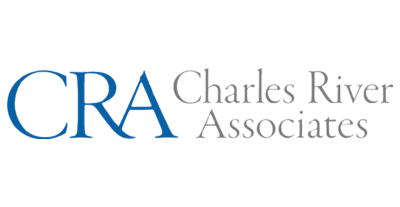Knowledge Hub
Join the Conversation!
Impartial and independent, ThoughtLeaders4 Competition Knowledge Hub hosts cutting edge industry content and insight.
Email maddi@thoughtleaders4.com to submit content.
Uncharted Waters – Emerging Trends in Collective Proceedings Orders
Date: 30/01/2023 Type: Articles Topic: Competition | Law | Litigation |Collective proceedings orders ("CPOs") have been gathering pace in the English[1] legal system for some time. This trend has taken few stakeholders by surprise. Since the Supreme Court's landmark decision in Merricks v Mastercard[2] in December 2020 significantly lowered the bar for CPO certifications, many prospective litigants have been incentivised to register CPOs with the Competition Appeal Tribunal ("CAT"). Indeed, many such claims were waiting in the wings pending the outcome of the Merricks judgment (in some cases, officially stayed by the CAT to that end). The result has been that, over 2021 and 2022, prospective CPOs have been registered with the CAT in droves. Those CPOs which had already been registered have been vigorously re-energised. At the time of writing, a total of ten CPOs have now been certified by the CAT and will be heard in a full trial. A further fourteen CPOs have been filed with the CAT to await a certification hearing. Still more CPOs have been announced.
Now, at the beginning of 2023, there are a number of very interesting trends that have emerged from the recent flurry of CPO registrations and certifications that are worth exploring. This article will explore such developments and examine the precedents they are setting for ongoing and future CPOs. Before examining such trends, the origins of CPOs will be set out to give context as to how this nascent legal area (uncharted waters for the English legal system) has come about.
Origins and Emergence of CPOs
Pre-2015 – an ineffective collective actions system
Unlike the United States, the English legal system has, historically and before the introduction of CPOs at any rate, never had a vehicle which is akin to a class action claim. That said, before 2015 there were two available options to seek collective redress for the same harm suffered by multiple claimants: group litigation orders ("GLOs") and representative actions. Whilst both forms of collective action have been (and are still) used in respect of alternative claim types (e.g., tortious damages), they have had very little (if any) success in the context of competition law claims.
GLOs are essentially an amalgamation of different claims which give rise to common or related issues of fact or law.[3] Importantly, GLOs are pursued on an "opt-in" basis, meaning that any prospective participants in the group litigation need to proactively elect to participate in it by having their individual claims jointly managed with others. Representative actions are, by contrast to GLOs, a form of "opt-out" claim whereby a defined number of class members are automatically included within the action – without the need for these same individual class members to be officially joined or even identified at all – provided that they all have the "same interest" in the underlying action.
Both GLOs and representative actions have inherent features which render them largely unsuitable (or at best undesirable) for competition law claims. For GLOs, this is principally due to the fact that they must be pursued on an "opt-in" basis. Such claims inherently limit the potential size of the claimant class[4] and, by extension, the potential size of damages which can ultimately be awarded, something which is unappealing both for prospective claimants and third-party funders.[5] It is also worth noting that, whilst GLOs will collectively determine the common issues of fact and law which connect the claimants who have "opted in", the issue of damages for each individual claim are assessed separately. This effectively undermines the perceived expediency of pursuing GLOs, where claimants often decide that the need for their damages to be individually assessed removes a substantial part of the benefit to hearing the common issues of fact and law collectively. With that said, the requirement for claims to have "common or related issues of fact or law" to be eligible to be joined collectively as a GLO has a relatively low evidential bar. By contrast, representative actions – which, as noted, are brought on an opt-out basis and which may, therefore, render them an ostensibly more appealing form of collective action given the higher quantification of damages which might be available[6] – are often hampered by the fact that each individual claimant must be deemed to have suffered from the same alleged harm to a comparable degree. This so-called "same interest" requirement has (until recently)[7] been interpreted very strictly by the English courts. Indeed, one of the earliest attempts to bring a representative action for competition law damages in Emerald Supplies v British Airways[8] failed authorisation (at least in part) on the grounds that the defendant could advance a defence against some of the claims but not all of them. The Court of Appeal ("CoA") decided that the consequence of this was that the proposed claimants could not be said to have the "same interest" if there was no consistent defence that could be advanced against all the proposed class members.
Given the unsuitability of GLOs and representative actions for competition law claims, it was recognised that many entities (particularly small businesses and individuals) were effectively barred from seeking redress to harm arising from competition law infringements. Without a suitable vehicle to pursue such justice collectively, the costs and logistical hurdles to seeking it individually were deemed to be foreclosing many from seeking damages to which they were potentially entitled.
Post-2015 – CPOs
CPOs were introduced via specific reforms to the Competition Act 1998 ("CA 1998")[9] on 1 October 2015 to address the shortcomings in the GLO and representative action regimes.
Chiefly, CPOs can be brought on either an "opt-in" or "opt-out" basis. This hybrid feature alone makes CPOs a more flexible and appealing vehicle for collective actions than GLOs or representative actions. That said, in order to pursue a CPO on either basis, it must first be certified by the Competition Appeal Tribunal ("CAT") as fulfilling the requisite criteria for a legitimate CPO.[10] Only once a CPO has been certified can it proceed to a full trial.
Initially, the CAT employed a highly restrictive interpretation of the CPO certification criteria. The very first CPO application to be brought, Dorothy Gibson v Pride,[11] failed to be certified on the basis that the proposed class representative could not satisfy the CAT that the class members had suffered comparable levels of harm such that a plausible quantification of damages could be arrived at. The case thus failed to satisfy the Suitability Criteria.[12] Similarly, the CAT initially concluded in Merricks v Mastercard[13] – the second CPO to be brought – that there was a lack of commonality between the proposed class members (who were held to have suffered varying degrees of harm from the anti-competitive conduct in question)[14] and that the claim was unsuitable for an award of aggregate damages in any event.[15]
However, the Supreme Court's landmark ruling in the Merricks appeal of the CAT's original decision has significantly lowered the bar to certification faced by prospective claimants. The Supreme Court determined that the CAT's approach to certification had been "vitiated by errors of law". Rebutting the two principal hinderances to certification identified by the CAT in Merricks, the Supreme Court found that: (1) the Commonality Criteria could be satisfied by the fact that all class members had suffered some degree of harm relating to the anti-competitive conduct in question, without the need for the class members to have all suffered the same level of harm; and (2) the issue of quantifying and assessing the nature of aggregate damages was (at least on an in-depth basis) a matter for trial and not one to be examined at the certification stage. The latter (according to the Supreme Court) only required a methodology to be advanced that could satisfy the CAT as being sufficiently credible to be worthy of closer examination at trial.
As a result of the Merricks judgment, prospective CPOs no longer need to satisfy the CAT (in effect) that all aspects of their methodology (from the identification of class members to the quantification of damages) are sufficiently robust as to be "trial ready". Rather, prospective CPOs are now afforded more time to remedy certain features of their methodologies in the interim between certification and trial. Provided that CPOs appear sufficiently credible, the Merricks precedent ensures such CPOs will be certified by the CAT.
Indeed, since Merricks, CPOs have been registered and, in many cases, certified with alacrity.[16] Walter Merricks' CPO was the first to achieve certification on 18 August 2021.[17] Since then, a further nine CPOs have been certified, with the most recent certification decision handed down on 5 October 2022.[18] Many more CPOs have been registered and announced.
It is clear that the main effect of Merricks has been to allow CPOs to achieve certification more easily. This has been something of an inevitability. However, there have been many emerging trends from recently registered and/or certified CPOs that are worthy of closer scrutiny. These trends will now be examined below.
Recent CPO Trends and Developments
CPOs increasingly brought on a standalone basis
Prior to December 2020, the majority of competition law damages claims brought in the English courts concerned follow-on actions against addressees of infringement decisions taken by the Competition & Markets Authority ("CMA") or the European Commission ("Commission"). Follow-on actions benefit chiefly from the fact that claimants do not need to establish that the defendant(s) has committed a breach of the applicable competition laws, given that the underlying infringement decision serves as prima facie evidence of the breach. Rather, claimants need only evidence that they have suffered loss as a result of the anti-competitive activities in question and adequately quantify such losses. In standalone actions, on the other hand, claimants must first satisfy the courts that the defendant(s) has committed an infringement, which is a much higher evidential burden. As such, the costs and complexities involved in bringing a standalone action are inevitably higher.
For these reasons, it is perhaps surprising that, to date, the majority of CPOs either certified by, or registered with, the CAT pertain to standalone actions. Of the ten CPOs which have been certified, seven have been brought on a standalone basis. Further, five of the registered CPOs awaiting a certification hearing are standalone actions compared to only one follow-on action. It is also worth noting that prospective claimants have shown themselves willing to pursue a hybrid-style claim, whereby part of the claim relates to anti-competitive activities which have been established by an infringement decision and other aspects relate to misconduct which has not been previously investigated. Relevant examples are the separate CPOs filed against Fender[19] and other manufacturers of musical instruments.[20] These CPOs all relate, in part, to underlying CMA decisions in which these companies were found to have engaged in online resale price maintenance ("RPM") but also incorporate separate, standalone claims based on additional (and alleged) infringements of the Chapter 101[21]/Chapter I[22] prohibitions.
Possibly, the CPO regime is being seen by prospective claimants and victims of (alleged) competition law infringements as a more expedient means by which to pursue redress, notwithstanding the greater difficulties that would be faced at trial. In the absence of any official infringement decision or ongoing investigation (which might lead to an infringement decision), the only option available to such parties wishing to pursue a follow-on action would be to officially approach a regulator with a view of convincing the latter to open an investigation. However, actively petitioning a competition regulator to launch an investigation, such as would allow a follow-on claim to be brought, may not be an efficient option from a timeline perspective. Even if a regulator could be persuaded to investigate an alleged infringement(s) (which is far from guaranteed), it could take years before any such investigation were concluded. Moreover, any ultimate infringement decision may not adequately capture the infringing activities in such a way as would allow the claimants in question to bring a follow-on action that would sufficiently collate to the specific losses they would be claiming for. The relatively short timeframe for pursuing a standalone CPO may, by comparison, seem a more palatable option.
High numbers of abuse of dominance claims
Following on from the above, it may also be the case that the number of standalone collective actions to be heard by the CAT is reflective of the fact that the majority of these CPOs are based on abuse of dominance claims, as opposed to cartel activities (see below). Official investigations into Article 102[23] / Chapter II[24] abuses are rarer than investigations into possible infringements of the Article 101 / Chapter I prohibitions. This, in turn, may reinforce the potential reluctance of prospective claimants to await any official infringement decision in order to pursue a follow-on action (see above).
Successfully establishing that a party has abused a dominant position is a much more complex exercise (both for a regulator and a private party pursuing a standalone action) than evidencing that an infringement of the Article 101 / Chapter I prohibitions has taken place. It requires (inter alia) credible market share data as well as robust factual and economic evidence to substantiate allegations that the accused party both abused its dominance and caused losses to the claimants by virtue of the same. It is interesting, therefore, that class representatives have shown such a propensity to register CPOs with the double challenge of being both a standalone action and based on an alleged abuse of dominance. The resulting difficulties at trial will be far from insignificant.
Strong focus on the tech and digital sectors
It is noteworthy that companies active in the tech and digital space have been the chief targets of the new CPO regime. This is, of course, emblematic of the scrutiny that is currently being levied on tech firms by global regulators in both a merger control and antitrust context. Regulators have long had their eye on "big tech"[25] in particular and the UK and EU, among others, are increasingly taking steps to up the ante against these companies through tougher legislation, greater interventionism and harsher sanctions. With that said, the success of global regulators in accomplishing the goal of checking the power of tech and digital companies has not (to put it charitably) been unqualified to date.
Against this backdrop, it appears the class representatives in CPOs are taking up the mantle themselves and bringing the fight against tech and digital companies to a new arena. At the time of writing, CPOs have been filed against each of Google,[26] Meta,[27] Qualcomm[28] and, in fact, two separate CPOs have been filed against Apple.[29] A further CPO has been announced – but not, as yet, filed – against Amazon. All of these CPOs relate to abuse of dominance claims. Additionally, it is worth highlighting two other CPOs which, although they do not pertain to "big tech", are nonetheless being brought against companies in the digital sector. The first is against Sony[30] (concerning allegations that the company committed various abuses of its dominant position in the gaming console and digital game distribution markets) and the second against Bittylicious and other cryptocurrency exchanges like Binance[31] (concerning allegations that these exchanges colluded over the de-listing of a particular cryptocurrency known as BSV).
It will be very interesting to see whether CPOs are able to achieve any more success than regulators in gaining scalps against tech and digital companies.
CPOs being used to try wider legal issues
CPOs are, of course, a bespoke creation designed to assist claimants in pursuing collective redress in relation to competition law damages claims. They are not, inherently, intended to facilitate any claims in other legal areas. Nonetheless, it is intriguing that a number of recently filed CPOs – although their respective claims have a predominant basis in competition law – also incorporate wider issues that do not technically, or at least neatly, fall within this area. One such example is the claim against Meta. Although, at its heart, this claim is arguing that Meta abused its dominant position in the personal social networking and social media markets, the case largely concerns the company's use of data and related policies vis-à-vis the same. As a result, the claim will inevitably involve many legal arguments concerning the applicable data protection laws. Similarly, a recently announced CPO against various UK water and sewerage companies will – as part of establishing that these companies levied excessive charges for treating wastewater – also seek to argue that these companies broke the applicable environmental laws through unlawful discharges of sewage and wastewater into UK waterways.
Of course, the inherent nature of competition law is such that it involves the application of general principles to different industries and market sectors. However, it is intriguing that such broader legal concepts as the above are being bundled into these competition law claims. It demonstrates both the creativeness of some CPOs but also the added complexities for the claimants at trial (and, of course, the CAT in ultimately determining the outcome of the CPO).
Beware of carriage disputes
One issue that has begun to arise for prospective CPOs is that of so-called "carriage disputes". This refers to a CPO where more than one entity is competing with another for the position of class representative. This situation typically arises in the context of follow-on actions, where different prospective class representatives have launched similar claims in respect of the same anti-competitive infringement. The class representatives will generally be seeking redress in respect of the same losses suffered from such infringement but will differ in their proposed methodology and approach. Subsequently, these multiple claims will compete directly in order to be selected by the CAT as the appropriate CPO to be heard at trial.
Prospective CPOs have already run into difficultly as a result of carriage disputes. One such example is that of the foreign exchange trading ("FX")[32] follow-on action against various European banks who were found guilty of collusive behaviours in two separate decisions by the Commission.[33] In this case, two prospective class representatives sought to persuade the CAT that their proposed CPO was the more suitable to be heard at trial. Both proposed CPOs were premised on an "opt-out" basis. The CAT ultimately determined that neither CPO should be certified on the basis that an "opt-out" formulation of the claim was not suitable. The CAT invited the parties to re-formulate their proposed CPOs and to re-submit the same for the CAT's examination at a later certification hearing. In this case, neither class representative considered that a reformulated "opt-in" claim was viable and did not refile their respective CPOs.
Arguably, given the FX claim was always considered unsuitable for an "opt-in" CPO, it was doomed to fail if the CAT would not grant it on an "opt-out" basis regardless of whether the issue of a carriage dispute arose. In fact, the CAT is obliged, when confronted with a carriage dispute, to decide which is the more apposite to be certified (assuming at least one fulfils the requisite certification criteria). One could argue therefore that carriage disputes do not present an insuperable obstacle or something which, in and of itself, could derail a potential CPO. With that said, claimants should still be wary of carriage disputes. Inevitably, the confrontation inherent in carriage disputes between the class members and the need for the CAT to examine two (or more) proposed CPO claims will incur additional costs and cause unnecessary delays.
The CAT has since exercised its obligation to certify one of two (or more) competing CPOs when it authorised the "opt-in" CPO application brought by the Road Haulage Association ("RHA") in its follow-on action[34] against addressees of the Commission's 2016 Trucks cartel decision.[35] The CAT preferred[36] the RHA's "opt-in" formulation compared to a competing "opt-out" CPO application filed by an SPV class representative.[37]
Funding arrangements under scrutiny
Third-party funding has become a central feature of the nascent CPO regime. Just as small businesses and consumers are unlikely to be able to fund individual damages claims, so too are such entities unlikely to afford the costs involved in bringing such large and complex claims collectively as CPOs (notwithstanding the ability to pool resources). The funds required to bankroll a CPO from application through to the conclusion of any ultimate trial are significant. Indeed, the CAT has indicated that the availability of sufficient funds will be a factor in its application of the Suitability Criteria to any prospective CPO.
Recently, there has been an important development vis-à-vis CPO funding which, depending on the outcome, could have severe consequences for both present and future CPOs. In the CPOs brought by RHA and UKTC respectively in respect of the Trucks cartel, one defendant to these claims, DAF,[38] has argued that the funding for these CPOs is equivalent to a damages-based agreement ("DBA"). DBAs are, in essence, "no win, no fee" arrangements whereby services can be provided for a share of any damages that may be won at trial (in lieu of traditional remuneration fees). Importantly, DBAs are unenforceable if the funder in question is providing advice and/or services in relation to the underlying claim, which includes the "provision of financial services or assistance".[39] In the context of the Trucks CPOs, DAF argued that the funders were clearly providing financial services in return for a pro rata fee relating to any eventual damages claimed (i.e., the higher the eventual damages, the higher the fee return). This would render the financing arrangement an unenforceable DBA as opposed to a legitimate conditional fee agreement ("CFA"), where the latter involves the levying of success fees in the event of a damages award but such fees are capped at a certain specified percentage or amount.
DAF appealed this issue to the CoA where the latter determined[40] that the funding arrangements should not be seen as a DBA. Inter alia, the CoA accepted the CAT's own position that the wording "provision of financial services or assistance" should be interpreted more purposively and should not be taken to apply to funders who, whilst providing financial services, are otherwise playing no active role in the management of the CPO. In the CoA's view, the legislation was intended to render DBAs unenforceable only where the funder in question is actively managing the claim. This not being the case with respect to the Trucks CPOs, DAF's appeal was dismissed.
Since the CoA's judgment was handed down, DAF has won approval to take the appeal to the Supreme Court. If the Supreme Court is inclined to disagree with both the CoA and CAT, it will have very significant implications for ongoing CPOs. It will undermine the basis by which these claims have been funded which could, in the worst case scenario, see these CPOs collapse as the funders withdraw their support. Watch this space.
Conclusion
Since the Supreme Court's decision in Merricks, there has been a huge increase in the number of CPOs being brought before the CAT. The mood music at present suggests that CPOs, buoyed by the success of ten certified applications to date, will continue to be brought as we move further into 2023 and beyond. The nature of these CPOs, moreover, are increasingly bold and innovative, often combining standalone actions with complex abuse of dominance claims that are frequently targeting companies in the tech space, as well as other industries. As such, it can reasonably be said that companies which have committed (or are presently committing) infringements of the applicable competition laws (whether this has been officially established by an infringement decision or not) should take heed of this new, and potentially potent, vehicle for seeking collective redress. In light of the exorbitant sums being claimed by some of these CPOs (which, in some cases, runs into billions of pounds), CPOs should not be dismissed as toothless litigious tools. Apart from anything else, the costs involved in defending such claims are far from insignificant and could tie companies up in the CAT for years.
The above notwithstanding, emerging trends suggest that CPOs are not enjoying an entirely easy ride at present. Issues such as contingent funding arrangements and carriage disputes are threatening to hinder their progress. Moreover, the complexities inherent in bringing these claims to trial may yet prove to be their ultimate undoing. It must be remembered that, whilst a significant number of CPOs have been certified (with still more pending certification), we are a long way off seeing a full trial, yet alone an ultimate decision. We will need to await further developments before we can truly appreciate how much impact CPOs will have on the litigation landscape of the English courts and competition law enforcement/redress.
Authored by Stephenson Harwood:
Will Spens - Will.Spens@shlegal.com
Genevieve Quierin - Genevieve.Quierin@shlegal.com
Marta Garcia - Marta.Garcia@shlegal.com
[1] Please note that, throughout this article, wherever the terms "English" and "English courts" are used these will be referring to the jurisdiction of England and Wales.
[2] Mastercard Incorporated and others (Appellants) v Walter Hugh Merricks CBE (Respondent) [2020] UKSC 51. Available at: https://www.supremecourt.uk/cases/docs/uksc-2019-0118-judgment.pdf
[3] This collection of disparate claims is jointly case managed under a court order.
[4] This is principally due to practicable and logistical issues, where potential class members may lack the awareness of the claim to actively "opt-in" and proactively contact potential class members about "opting-in" is not always easy or even feasible.
[5] For the sake of clarity, it should be noted that competition law claims – particularly when brought by small businesses and/or individuals on a follow-on basis to an official infringement decision – often involve small per capita damages. However, when such claims are combined collectively, the aggregate level of potential damages can be substantial. This factor is what principally separates competition law claims from other claim types when considering the suitability of GLOs and representative actions for pursuing such claims collectively. It is this factor too which can entice third-party funders to bankroll a collective action, something which is very important for CPOs in particular (see section below).
[6] The larger the size of the class members, the higher potential damages which might be awarded.
[7] The Supreme Court's recent judgment in Lloyd v Google [2021] UKSC 50 has amended the restrictiveness of this test. Although this was not a competition claim, it has provided a salient clarification on the nature of the "same interest" requirement. Namely, rather than following the precedent set by representative actions in the past – which have insisted that class members need to have a near identical basis for being included in the claim – the Supreme Court has clarified that this criterion is to be interpreted more purposively. The issue to consider is not whether the claimants have an identical basis for making a claim but whether the class representative can pursue the claim in such a way as promotes the interests of all class members and not in a way that benefits some members at the expense of others due to inherent conflicts of interest.
[8] Emerald Supplies Ltd v British Airways Plc [2010] EWCA Civ 1284.
[9] As amended by Schedule 8 paragraph 5 of the Consumer Rights Act 2015.
[10] Under the CPO regime, in order for a CPO to be heard at trial, it must first be certified by the CAT. To achieve certification, the CAT must be satisfied that: (i) a suitable individual can be authorised to act as the class representative ("Authorisation Test"); and (ii) the underlying claim(s) are eligible to be heard as a CPO ("Eligibility Test"). The Eligibility Test can itself be broken down into the following criteria: (a) be brought on behalf of an identifiable class of persons ("Class of Persons Criteria"); (b) raise common issues ("Commonality Criteria"); and (c) be suitable for collective proceedings, particularly for an aggregate damages award ("Suitability Criteria").
[11] Dorothy Gibson v Pride Mobility Products Limited (case No. 1257/7/7/16).
[12] Rule 79(2)(a)-(g) of the Competition Appeal Tribunal Rules 2015 list a number of non-exhaustive factors that can be used to assess a CPO's suitability as follows: (a) whether collective proceedings are an appropriate means for the fair and efficient resolution of the common issues; (b) the costs and the benefits of continuing the collective proceedings; (c) whether any separate proceedings making claims of the same or a similar nature have already been commenced by members of the class; (d) the size and the nature of the class; (e) whether it is possible to determine in respect of any person whether that person is or is not a member of the class; (f) whether the claims are suitable for an aggregate award of damages; and (g) the availability of alternative dispute resolution and any other means of resolving the dispute, including the availability of redress through voluntary schemes whether approved by the CMA under section 49C of the 1998 Act(a) or otherwise.
[13] Walter Hugh Merricks CBE v Mastercard Inc and others (case No. 1266/7/7/16)
[14] The Merricks claim relates to the multilateral interchange fees (“MIFs”) that Mastercard was found to have levied on transactions between May 1992 and December 2007, which the European Commission found to constitute an infringement of Article 101 of the TFEU. The CAT initially determined that consumers and businesses would have suffered varying degrees of harm from the "pass on" effect of MIFs in the form of higher costs to both provide and receive various goods/services, which was initially determined not to satisfy the Commonality Criteria.
[15] The CAT did not think that the proposed methodology advanced to substantiate the quantification of the £14 billion in damages being sought was sufficiently credible. Moreover, the CAT did not see a plausible method of estimating individual loss for the purpose of distributing pro rata shares of any ultimate damages award to the individual claimants, even if the aggregate losses could be adequately calculated.
[16] For context, the effect of the CAT's restrictive approach to CPO certification pre-Merricks meant that no CPOs achieved even this initial hurdle prior to the Supreme Court's decision. Consequently, there was a period of over five years between 1 October 2015 and 11 December 2020 where no CPOs were able to get off the ground, despite the intentions of the reforms to make access to collective redress more viable. This was not for lack of trying. Between 1 October 2015 and 11 December 2020, a total of nine CPOs were registered with the CAT (including the Merricks CPO itself and the (ultimately abandoned) action in Dorothy Gibson v Pride). The remaining seven CPOs were either officially stayed or held in abeyance to await the outcome of the appeal in Merricks.
[17] Walter Hugh Merricks CBE v Mastercard Incorporated and Others (case No. 1266/7/7/16).
[18] See https://www.catribunal.org.uk/cases/14047721-david-courtney-boyle
[19] Elisabetta Sciallis v Fender Musical Instruments Europe Limited and Another (case No. 1437/7/22).
[20] See: (i) Elisabetta Sciallis v Korg (UK) Limited and Korg Inc. (case No. 1529/7/7/22); (ii) Elisabetta Sciallis v Roland Europe Group Limited and Roland Corporation (case No. 1530/7/7/22); and (iii) Elisabetta Sciallis v Yamaha Music Europe GmbH and Yamaha Corporation (case No. 1531/7/7/22).
[21] Chapter 101 of the Treaty on the Functioning of the European Union ("TFEU").
[22] Section 2(1) of the CA 1998 ("Chapter I").
[23] Article 102 of the TFEU.
[24] Section 18(1) of the CA 1998 ("Chapter II").
[25] By '"big tech", this chiefly refers to the so-called 'GAMMA' firms consisting of Google, Amazon, Meta, Microsoft and Apple.
[26] Elizabeth Helen Coll v Alphabet Inc. and Others (case No. 1408/7/7/21).
[27] Dr Liza Lovdahl Gormsen v Meta Platforms, Inc. and Others (case No. 1433/7/7/22).
[28] Consumers' Association v Qualcomm Incorporated (case No. 1382/7/7/21).
[29] Dr Rachel Kent v Apple Inc. and Apple Distribution International Limited (case No. 1403/7/721) and Mr Justin Gutmann v Apple Inc., Apple Distribution International Limited, and Apple Retail UK Limited (case No. 1468/7/7/22).
[30] Alex Neill Class Representative Limited v Sony Interactive Entertainment Europe Limited; Sony Interactive Entertainment Network Europe Limited; and Sony Interactive Entertainment UK Limited (case No. 1527/7/7/22).
[31] BSV Claims Limited v Bittylicious Limited & Others (case No. 1523/7/7/22).
[32] Technically, these consisted of two competing (and prospective) CPOs which were: (i) Michael O'Higgins FX Class Representative Limited v Barclays Bank PLC and Others (case No. 1329/7/7/19); and (ii) Mr Phillip Evans v Barclays Bank PLC and Others (case No. 1336/7/7/19).
[33] Namely, Case AT.40135 FOREX (Three Way Banana Split) and Case AT.40135 FOREX (Essex Express).
[34] Road Haulage Association Limited v Man SE and Others (case No. 1289/7/7/18).
[35] See Case AT.39824 – Trucks
[36] In an argument the CAT found particularly persuasive, the RHA submitted that all affected class members (i.e., road haulage operators) were unlikely to suffer from any "inertia" in proactively joining the CPO. These companies were badly affected by the Trucks Cartel – due principally to the tight profit margins with which they operate – and thus were well motivated to seek damages. As such, it was reasonable to conclude that these companies would "opt-in" to the claim.
UK Trucks Claim Limited v Stellantis N.V. (formerly Fiat Chrysler Automobiles N.V.) and Others (case No. 1282/7/7/18)
[37] The SPV in question was UK Trucks Claim Limited ("UKTC").
[38] DAF consists of: (i) Paccar, Inc.; (ii) DAF Trucks N.V.; and (3) DAF Trucks Deutschland GmbH.
[39] Section 4(2) of the Compensation Act 2006.
[40] See the CoA's decision at: https://www.judiciary.uk/wp-content/uploads/2022/07/Municipio-de-Mariana-v-BHP-judgment-080722.pdf
Author
Will Spens, Genevieve Quierin and Marta Garcia - Stephenson Harwood
Our Competition Corporate Partners



















